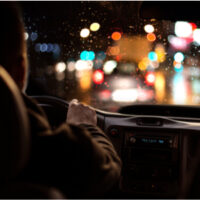Driving in the Dark: Ways to Decrease Your Car Accident Risks

Throughout the month of October, temperatures are slowly dropping and the sun is setting earlier. By November 1, which is when we ‘fall back’ from daylight savings time, it will start getting dark just about the time most people are coming home from work. As night blindness is a common problem, this creates real dangers and makes car accidents in Bradenton more likely to happen.
Car Accident Risks Increase After Dark
Driving at night increases the odds of car accidents and diminished visibility makes them more likely to be severe. According to the National Highway Traffic Safety Administration (NHTSA), the odds of being in a fatal crash nearly triple after dark.
Depth perception, peripheral vision, and the ability to distinguish between different colors are all diminished once it starts to get dark. Even if you have perfect vision otherwise, you can still find yourself having trouble seeing the lines on the road, making out certain shapes, and being blinded by oncoming headlights. The fact that drunk driving and drowsy driving rates dramatically increase at night only serves to increase the risks.
Protecting Yourself When Driving At Night
Popular Mechanics warns that headlights do help when driving at night, but they are no substitute for driving during the day. Standard low beams typically shed light only on an area covering roughly 160 to 250 feet in front of your vehicle. High beams extend farther, anywhere between 350 to 500 feet ahead. However, when you consider that while driving at 60 mph you require over 200 feet to come to a complete stop, it still does not give you much time to respond.
To account for the reduced visibility all drivers experience at night, it is important to take a few simple safety precautions. These include:
- Clean and correctly aim your headlights. Dirty headlights increase glare. Give them a good washing and go to a mechanic to ensure they are properly aimed on the road ahead.
- Dim your instrument panel. Most cars have instrument panels that feature a multitude of lights, many of which are not pertinent to driver safety. Dimming these will help you see outside of the vehicle better.
- Avoid looking directly at headlights. Staring into oncoming headlights causes momentary blindness, as does looking at street lamps and traffic signals. While it may be only for a few seconds, it is long enough to increase your car accident risks. Instead of looking at them directly, look somewhat to the side.
- Visit your doctor or an ophthalmologist. In some cases, night blindness can be a side effect of medication or a symptom of an underlying condition. Check with your doctor if the problem is severe. It is also important to get regular eye exams. If you do wear glasses, anti-glare lenses can help.
Contact Us Today for Help
At the Law Office of Steven G. Lavely, we help you get the compensation you need to recover when car accidents happen. To request a consultation, contact our Bradenton car accident attorney today.
Resource:
popularmechanics.com/cars/how-to/g106/10-safety-tips-for-driving-after-dark/
https://www.lavelylaw.com/hit-and-run-accidents-how-to-hold-at-fault-drivers-accountable/

